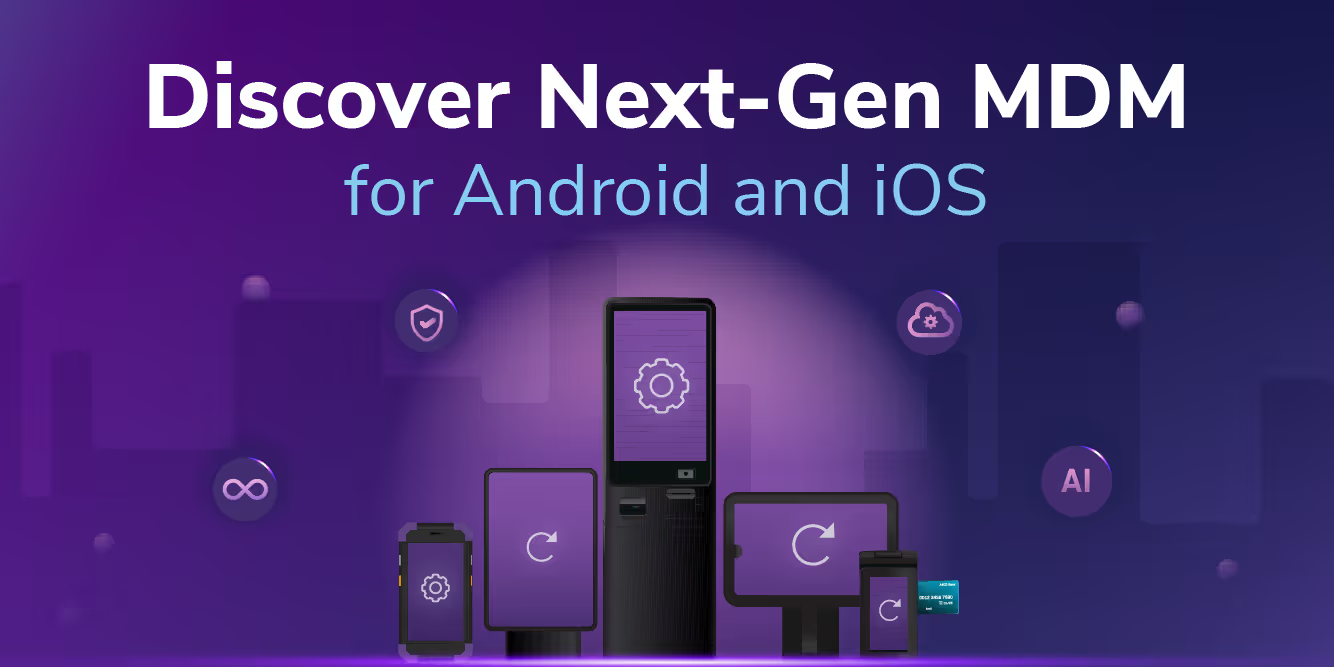If you’re in the retail or restaurant industry, the race to implement new edge devices is on. Tech like self-service kiosks, POS systems, and digital signage are creating better customer experiences, solving critical operational challenges, and becoming the data engines that feed AI models. According to one survey, 75% of retail executives are planning tech transformations, and another estimates that 62% of restaurants are embracing kiosks, signaling large-scale tech adoption.
But as today’s consumer-driven companies invest in new devices, tech leaders are also tasked with keeping total cost of ownership down, and ROI up. Every cost and every delay ripples across your bottom line: From unforeseen device friction to extended procurement and shipping cycles to slow on-site provisioning.
To maximize value, the critical decisions you make at the beginning of a device lifecycle, from initial device procurement to provisioning and deployment, are some of the most important — which is why we’ll explore how to plan and spot potential friction from the start, then save money and time as you scale your device fleet.
Evaluating the Hidden Costs of Device Procurement
Your first fork in the TCO road: The devices themselves. To get the best value across the device lifecycle, you’ll need to consider the device costs and procurement speed, alongside provisioning, implementation, and integrations.
And there are some traps: A low-cost, off-the-shelf device might fit with your current device (and device management) ecosystem, but make sure to ask: Will vendor lock-in slow onboarding and implementation? Are there integration surprises or operational limitations down the road, either with the devices themselves or the device management system you’re using? If a device becomes obsolete or misaligned with your business, are you staring down another procurement round, with fresh integration work and even more delays?
Beware the vendor lock-in tax
Right now, flexibility matters. When you can adapt to new SKUs or configurations without rebuilding from scratch, you avoid both wasted spend on surplus units and the sunk cost of devices that no longer earn their keep.
If any of that sounds like a risk, start by evaluating your current and future tech roadmap. Next, consider more diverse device management ecosystems that can help orchestrate multi-form factor, multi-os devices (and cut tool sprawl).
After that, leverage OEM and ODM partner networks to balance flexible, cost-effective hardware sourcing. This helps you factor in the long-term value of flexible, diverse, but still integrated ecosystems.
Factor in supply chains and shipping
The other somewhat obvious advantage of leveraging OEM and ODM partner networks is in faster sourcing and shipping. We’ve all lived through several flavors of delays and unexpected supply chain costs in the past ten years: From COVID and tariffs to a container ship clog in the Suez Canal. And we probably haven’t seen it all.
This tells us that the best way to navigate complex global supply networks is through diverse partner networks, leveraging them to guide the best sourcing options, balancing cost and speed.
Consider provisioning time
As devices are on their way, traditional chains route hardware from OEM → HQ → deployment site, adding weeks of handling and coordination — and that time is already costing you.
But then, you hit the provisioning stage, where physical staging requires bench space, packaging, and manpower. Sometimes, for your hardware of choice, or for small-scale implementations, manual provisioning is a necessity. If you can, zero-touch provisioning reduces in-house resources, but it still requires some manual steps. Third-party kitting is an option, but it’s more expensive, hard to scale, and creates delays.
For onboarding larger device fleets, there’s another option to consider: Seamless provisioning. Seamless saves time and money by shipping devices straight from the manufacturer to their final destination, pre-configured and ready to run, with no manual intervention. Devices arrive faster, without expensive third-party kitting. And, because it can be done at scale, it gives large device deployments a head start.
When it comes to edge devices, time really is money: Deployment delays cut into your ROI. Once you factor in the hidden costs, simplified, scalable provisioning methods turn what could have been a huge time and resource suck into a massive competitive advantage.
Factoring in the Economics of Delay
Some costs you can measure, and some you can’t. The hard costs show up on your balance sheet, the mounting, hidden costs of idle hardware don’t, and they’re often more damaging: frustrated customers, missed sales, and an ROI window that keeps sliding further away. Every stalled deployment represents more than operational drag — it’s a direct hit to your revenue and reputation.
If you want to quantify the real cost, here’s how to build the equation:
- Logistics Costs = Freight cost per unit × number of shipping cycles.
- Hardware Lifecycle = Cost of SKU rigidity, including mid-cycle swaps or surplus obsolete units.
- Labor Costs = FTE cost × hours for provisioning and staging.
- Revenue Impact = Average revenue per device/day × downtime × number of devices.
- Customer Churn = Lost CLV from poor device availability.
The math is simple, but the implications are brutal. The slower your deployment, the more expensive your fleet becomes.
Time-to-Value: The Real Cost Advantage
The fastest way to scale up your device fleet and lower your total cost of ownership isn’t by cutting corners. It’s by combining smart device procurement with fast, frictionless provisioning.
Yes, hardware costs matter. But the real lever for ROI isn’t what you pay up front — it’s how quickly your investment starts working for you. Every day a device sits unprovisioned is a day it’s not generating revenue, streamlining workflows, or powering AI outcomes. The moment those devices go live, they start paying for themselves.
That’s why the smartest organizations are shifting their mindset from hardware cost optimization to time optimization. They’re choosing flexible, scalable solutions that shorten deployment windows, eliminate vendor lock-in, and accelerate time to value.
Now’s the time to rethink how you measure success. Instead of focusing only on total cost, model your time-to-value: How fast new devices move from purchase order to productivity. Because the organizations that reach activation first will lead the next wave of growth.
In the race to cost-effective, future-ready device adoption, the real edge isn’t cheaper hardware — it’s smarter, faster deployment that turns investment into impact, fast.
FAQ
Keep Exploring
















